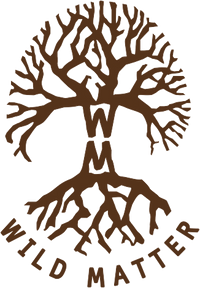Posted on January 20 2019
During a rapé ritual - in which nothing but Rapé is used - the ceremonial leader first determines who needs which blend. After all, everyone has their own needs. The ceremonial leader tunes in and gets through who needs which kind of rapé. Afterwards, everyone expresses their intention: 'For what purpose do you follow the ceremony? What do you want to get an answer to?'
The use of Rapé results in strong stimulation of the mucous membranes, which can be experienced as a hard, internal slap. This intense blow causes the mind to open up, allowing the set intentions to do their work. Rapé helps the user to let go of emotional, physical and mental illnesses. It releases negative energies and confusion. Shamans use Rapé to reconnect with their higher self, which is said to connect them to the Holy Spirit.
Tobacco contains two other alkaloids: Harman and mortarman. These alkaloids are closely related to harmine and harmaline, which occur in A Tobacco, therefore, enhances the effect. Both substances are therefore inextricably linked during such Ayahuasca rituals. Rapé is also often combined with other shamanic ceremonies, such as Kambo- or sweat lodge rituals.
The ceremony actually involves two breaths, each of which shoots tobacco-based snuff deep into the two nasal cavities. Each breath is symbolic—the first breath through the left nostril symbolizes death, and the second breath through the right nostril represents rebirth. For the person receiving the rapé, each of these breaths is followed by an immediate sharp blow to the sinuses and head that clears the nasal cavity, purges the bowels, and ultimately leaves the person feeling calmer, grounded, and revitalized.
Practitioners who use this sacred plant medicine report that rapé is a powerful way to cleanse yourself of negative energy, ease the pain, and stimulate detoxification. Research shows that rapé’s nicotine content gives it its stimulating and focusing effects and increases key hormones in the body like epinephrine and dopamine. While studies have yet to fully research its medicinal properties, some advocates purport that rapé decalcifies the pineal gland and encourages the production of DMT.
A lack of clinical studies hasn’t stopped this herbal snuff from growing in popularity among people looking for alternative ways to manage pain. But it’s important to understand the ritual and cultural heritage of rapé before endeavoring any practice at home. From the blend of snuff you choose to the pipe used to administer it, there are several tools every practitioner needs. But ultimately, as with any spiritual practice, the key to a truly beneficial rapé ceremony lies in your intention.

0 comments